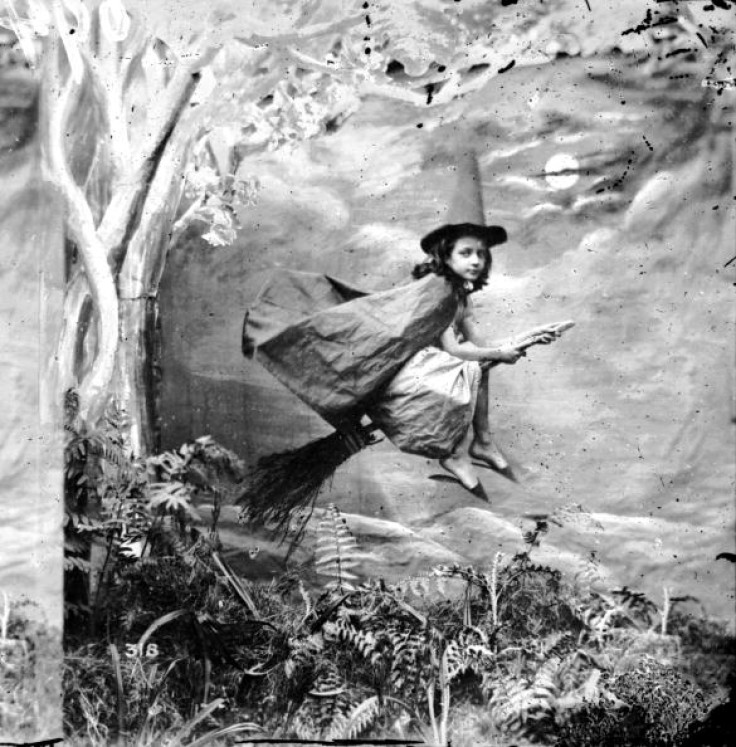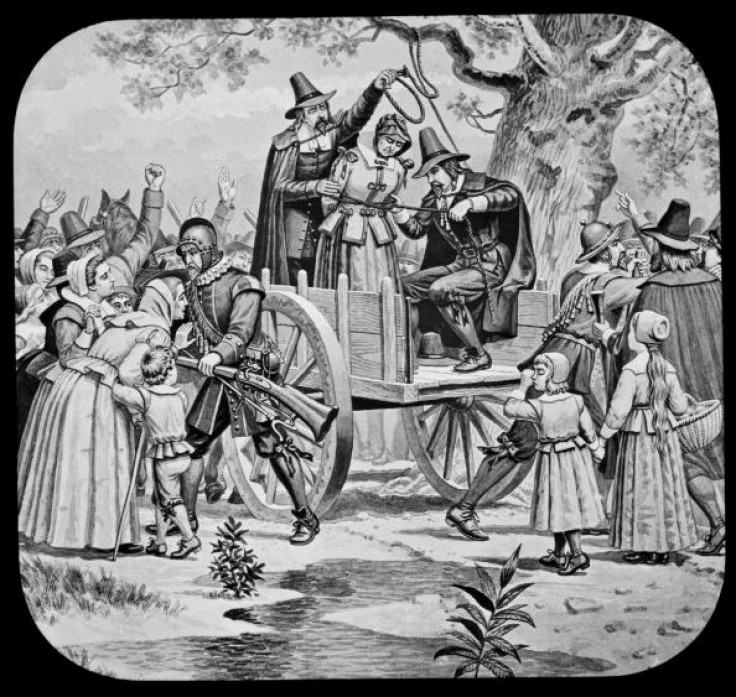Halloween 2014: Hallucinogenic Ergot Fungus Behind Flying Witches Myth and Salem Witch Trials
Medieval witches didn't fly on their broomsticks, but did take trips

The mold ergot could explain the origins of the flying witches myth which originated when witchcraft trials spread across Europe.
During the 15th and 18th centuries rye was often used to make bread. If the rye was infested by ergot – which contains ergotamine, a chemical similar to LSD – eating the bread could induce hallucinations.
As well as powerful hallucinations, eating ergot can cause unpleasant side effects such as nausea, vomiting and skin irritation. But these can be reduced if the ergot is absorbed through the thin tissues of armpits or female genitalia.

So women who wanted to take a trip started rubbing their genitalia on broomsticks which they had covered with an ergot ointment.
In the 15th century, the medieval writer and Dominican theologian Jordanes de Bergamo wrote: "The vulgar believe, and the witches confess, that on certain days or nights they anoint a staff and ride on it to the appointed place or anoint themselves under the arms and in other hairy places."
As this process did not work for men, women were the only one spotted "riding broomsticks". This is believed to have created the myth according to which witches could fly by using
This is believed to have created the myth according to which witches could fly by using broomsticks.
The prolonged use of ergot led to the condition known as "ergotism", which causes seizures and painful headaches.
Excessive use of the fungus can also result in gangrene: a life-threatening condition which causes the skin to peel off fingers and toes, and loss of limbs as tissues and muscles die.
Severe epidemics of ergotism occurred until the 19th century. A recent outbreak occurred in Ethiopia in 2001, after people had eaten contaminated barley.
Ergotism and Salem Witch Trials
Several people in the Massachusetts' city of Salem were tried after being accused of witchcraft between 1692 and 1693.
The prosecutions started after Betty Parris, 9, and her cousin Abigail Williams, 11, started behaving strangely.
According to reports, the two little girls had strong epileptic attacks, screamed, crawled under furniture, and complained that their skin burnt and itched.
Doctors were not able to find any links to existing ailments and concluded that the girls – and other people who had similar attacks – were victims of witchcraft.

Several people, the majority of whom were women, were arrested and tried. The trials resulted in the death of 20 defendants: 19 of whom were hanged and one tortured to death.
However, according to research by Linnda R Caporael, a graduate student in psychology at the University of California at Santa Barbara, convulsive ergotism may have led to what she called "the Salem witchcraft crisis".
The study, Ergotism: The Satan Loosed in Salem?, claimed that the grass along the coasts from Virgina to Newfoundland was wild rye, which was believed to have made the cattle ill several times.
The same rye was used to make bread which were eaten by people in Salem, who might have experienced seizures and other side effects due to the ingestion of the fungus.
"The grain was stored in barns and often waited months before being threshed when the weather turned cold," the study said. "The timing of Salem events fits this cycle. Threshing probably occurred shortly before Thanksgiving, the only holiday the Puritans observed. The children's symptoms appeared in December 1691."
© Copyright IBTimes 2024. All rights reserved.






